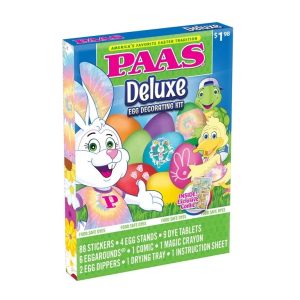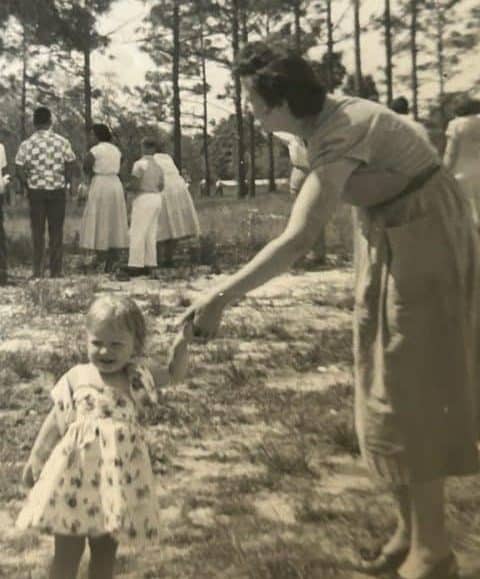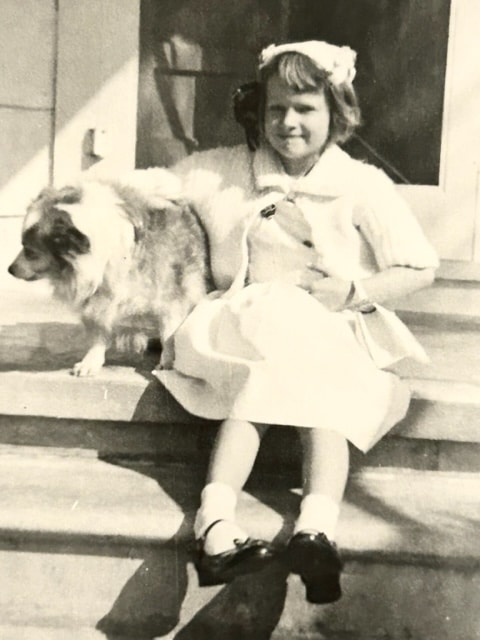Eggs – I think I’ve seen enough of them to last a lifetime! Growing up on a farm in Masaryktown, we processed many of those 75-calorie, high protein-packed little gems. We cared for them, from the nest to the packing case. Our eggs were given lots of love. At Easter, there was nothing like getting ready to color some of your own farm eggs.
PAAS decorating kits were (and still are) the popular choice for Easter egg coloring. They got their start back in the late 1800s. A New Jersey drug store owner named William Townley came up with an idea for a concentrated dye that came in tablet form. His dyes were made to be mixed with water and vinegar, and each tablet sold for five cents. Today PAAS is well known and has 20 varieties of egg coloring kits starting at about two dollars each.
I remember being anxious to start coloring my eggs. Mom left several dozen hard-boiled ones in the kitchen, enough for me and my older brother Lou. And coloring them was quite a production!
Our kitchen table was covered with newspaper, and there were Dixie cups everywhere to hold the dye tablets. Hot water. Got it! Vinegar. Ready! Time to color! We had a cup or two of dye for each main color. Making variations involved transferring an egg from cup to cup until just the desired shade was achieved.

Each kit came with a wire egg holder, stickers, and some stand-up paper rings to display your eggs. It also came with tissue designs and a small wax pencil called the Magic Crayon. What you wrote on the egg with the Magic Crayon stayed white and uncolored. We were amazed at that! And the tissue sheets left a nice design after being wrapped and held around a warm-colored egg.
I recall the fun of hunting those eggs. Yes, the real ones!
The Masaryktown Community Hall held an annual egg hunt for as long as I can remember. An average hunt back then required at least 30 dozen eggs. Farmers donated. Women cooked and colored. Eggs were hidden by the hall playground and the nearby Little League field.

One friend reminded me that they used to tape money directly to the prize eggs. I didn’t recall that. Later they quit taping it. This decision followed a rather unpleasant year when someone took all the money off before the hunt even began!
No matter how they were marked, prize eggs were always the ones we wanted to find first. Some were covered in foil. Others had numbers on them written in black magic marker. You might be awarded a small or large chocolate bunny. You might earn a cellophane-wrapped Easter basket full of treats. Personally, I just preferred coins and cash.
I couldn’t wait until my cousin Len came so we could hide eggs on the farm. We buried eggs under moss or set them in low tree branches. We put them in concrete cutouts below the house or tucked them out of sight along the eggroom wall. We were so good at disguising them that we’d often forget where they were! We’d hide 24 eggs only to find 22. Always a few missing! They’d show up days or even weeks later. Their aroma would give them away!
The Easter of 1960 would be one to remember. We spent that holiday living in an upstairs apartment behind the Masaryk Hotel.
We were displaced due to the flood of March 17, 1960. The heavy March rains and subsequent rising water affected most of central Florida. At least seven counties received federal assistance.
Masaryktown farms in low-lying areas became surrounded by water for several weeks. Ours was one of them. We had a foot of water in our house and more water in our coops. We lost most of our laying hens.
We tried for a “normal “ Easter that year. We colored eggs, had egg hunts, and bought new outfits. Dad, however, had other priorities like purchasing more chickens, repairing flooring and baseboards, and getting us back home and on the farm by Mother’s Day.
Today the big egg hunts use colorful plastic eggs. Their history is hard to determine. However, in 1978 a father and son team, Erwin and Donald Weder patented the first hinged plastic egg. It was a real breakthrough. Candy fit inside, and the eggs snapped shut. The halves stayed together for easy cleanup. They were an instant hit!
Inventor Donald Weder was the younger of the famous pair. He has some 1400 US patents to date. He outdistanced Thomas Edison, who had 1093 US patents. Quite an accomplishment! And Donald is still inventing at age 76.
The Weders are credited with many items for their flower business. They’ve developed florist foil, wrappers for bouquets, and inflammable Easter grass.
Eggs have been associated with Easter for centuries. Early Christians fasted during Lent and weren’t allowed to have them. Finally, on Easter Sunday, eggs could be eaten again. What a perfect and special treat!
Eggs are said to have no beginning and no end, like a circle. They also represent life and rebirth. And there’s a bit of awe to seeing a young chick being born—pecking its way out of an eggshell when the time is right. Yes, I’ve seen my share of baby chicks, too. There’s nothing like hundreds of them peeping away at your feet in a brooder house. When they grow up, they will bring someone else a lifetime of eggs!
Happy Easter!

